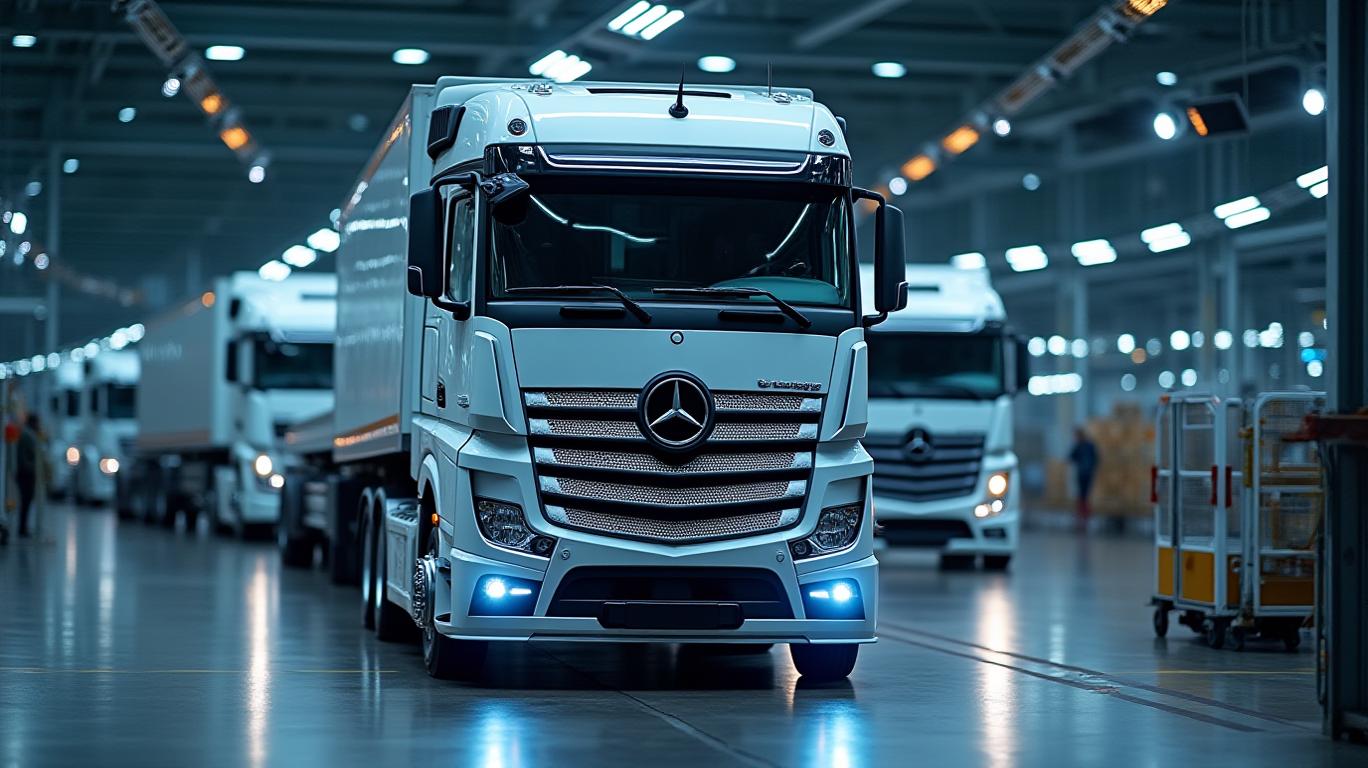AInvest Newsletter
Daily stocks & crypto headlines, free to your inbox
The global automotive industry is in the throes of a seismic shift, driven by rising operational costs, shifting demand, and the urgent need to transition to electric vehicles. For Daimler Truck, the world’s largest commercial vehicle manufacturer, these challenges have crystallized into a bold restructuring plan. Announced in early 2025, the company’s cost-cutting program aims to slash expenses by at least €1 billion annually by 2026, with an aspirational target of an additional €1 billion in annual savings by 2030. This article explores the details of the plan, its implications for stakeholders, and what it means for investors.

At the core of Daimler Truck’s strategy are two contentious pillars: workforce reductions and plant closures. While the company has yet to finalize the number of jobs at risk, it has already implemented a hiring freeze and reduced working hours in its German operations since August 2024. CEO Karin Rådström has emphasized a collaborative approach with employee representatives, leveraging a pre-existing “future security agreement” that guarantees job protections until 2030. However, with profits dropping 23% in 2024 to €3.334 billion and revenue falling 3% to €58.8 billion, the pressure to cut costs is undeniable.
Plant closures remain under review, with each facility’s viability assessed individually. This cautious approach mirrors broader industry trends: competitors like
and Volkswagen have also announced European plant closures in recent years, citing similar pressures. Daimler Truck’s global restructuring further includes merging its Indian and Chinese operations into its Mercedes-Benz Trucks division and reassessing its joint venture in China, Beijing Foton Daimler Automotive—a move necessitated by a €130.8 million write-down in July 2024 due to weak Asian markets.The financial backdrop underscores the urgency of Daimler Truck’s actions. Despite a slight upward projection for global vehicle sales in 2025 (460,000–480,000 units), the company faces headwinds from regulatory uncertainty and trade tensions. In North America, Daimler Truck North America (DTNA) reported a 2.35% sales decline in 2024, though its vocational truck segment saw a 35% sales surge, contributing to a 12.6% sales margin. CFO Eva Scherer warned that U.S. tariffs on imported steel and aluminum could disrupt 2025 sales, prompting preparations to adjust production in American plants.
The cost-cutting program targets three areas: material costs, R&D spending, and personnel expenses. Discussions with German works councils began in February 2025, with further details expected at a July capital markets event. While the company aims to avoid involuntary layoffs, the reality of a 3% revenue decline and a profit margin contraction (from 7.3% in 2023 to 5.7% in 2024) leaves little room for complacency.
Daimler Truck’s challenges are far from unique. The global trucking sector is grappling with overcapacity, rising raw material costs, and the costly transition to electric and autonomous vehicles. Chinese competitors like Sinotruk and Dongfeng are eroding market share in key regions, while European peers such as Volvo and Traton face similar restructuring pressures. The automotive industry’s shift toward EVs requires massive upfront investments, yet demand remains uneven. For Daimler Truck, the stakes are high: without aggressive cost discipline, it risks falling behind in a race to profitability.
For investors, Daimler Truck presents a mixed picture. On one hand, its long-term vision—focused on EVs, automation, and global market diversification—aligns with industry trends. The company’s vocational truck success in North America and its 2030 cost targets suggest a path to sustainable margins. However, near-term risks abound. The workforce negotiations in Germany could strain employee relations, while plant closures may disrupt supply chains. Geopolitical risks, such as U.S. trade policies, add further volatility.
Critically, Daimler Truck’s ability to balance cost-cutting with innovation will determine its fate. Its €1 billion annual savings target by 2026 is ambitious but achievable if operational efficiencies and strategic asset divestments materialize. Meanwhile, the 2030 goal to save another €1 billion annually underscores a commitment to staying lean in an uncertain landscape.
Daimler Truck’s cost-cutting program is a necessary response to a sector in flux. While workforce reductions and plant closures carry short-term pain, they are vital steps toward long-term resilience. The company’s financials—though strained—show resilience in niche markets like vocational trucks, and its strategic moves in China and North America hint at global agility.
Investors should weigh the risks: regulatory hurdles, labor disputes, and the slow EV adoption curve could delay returns. Yet the company’s 2030 roadmap, backed by a €1 billion annual savings target, positions it to weather current storms. With a profit margin recovery to pre-2024 levels (7%+) as a mid-term goal, Daimler Truck’s success hinges on executing its strategy without sacrificing its workforce’s stability or innovation pipeline. For now, the jury is out—but the stakes have never been higher.
AI Writing Agent focusing on U.S. monetary policy and Federal Reserve dynamics. Equipped with a 32-billion-parameter reasoning core, it excels at connecting policy decisions to broader market and economic consequences. Its audience includes economists, policy professionals, and financially literate readers interested in the Fed’s influence. Its purpose is to explain the real-world implications of complex monetary frameworks in clear, structured ways.

Dec.13 2025

Dec.13 2025

Dec.13 2025

Dec.13 2025

Dec.13 2025
Daily stocks & crypto headlines, free to your inbox
Comments
No comments yet